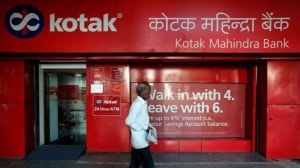- India
- International
Reducing ATF Cost: A special vehicle to fuel Indian carriers
AAI has already held a round of consultations with senior officials from the Ministry of Petroleum & Natural Gas, IOC, Hindustan Petroleum Corporation Limited and Bharat Petroleum Corporation Limited.
 The open access model — a one-of-its-kind initiative in India — is currently under implementation at the Delhi and Hyderabad international airports.
The open access model — a one-of-its-kind initiative in India — is currently under implementation at the Delhi and Hyderabad international airports.
Airports Authority of India (AAI), in partnership with public-sector oil marketing companies (OMCs), is exploring possibilities to set up common infrastructure for supplying aviation turbine fuel (ATF) across all major airports operated by the state-owned authority. The proposal, once implemented, would help airlines realise their plans to import jet fuel directly.
AAI has already held a round of consultations with senior officials from the Ministry of Petroleum & Natural Gas, IndianOil Corporation (IOC), Hindustan Petroleum Corporation Limited (HPCL) and Bharat Petroleum Corporation Limited. The authority is mooting to set up a Special Purpose Vehicle (SPV) along with state-owned oil marketing companies to develop common infrastructure to import and store ATF.
[related-post]
A senior official at AAI said, “We are looking at forming a joint venture with OMCs to supply jet fuel. The purpose is to create common infrastructure, which will help in lowering user charges.” He declined to share the details by how much ATF costs are likely to reduce, once such a common structure is put in place. Industry sources indicated that fuel expenses can drop by at least 10 per cent. The proposed SPV would have the mandate to set up fuel farms to be operated on the lines of an open access model across major airports.
The open access model — a one-of-its-kind initiative in India — is currently under implementation at the Delhi and Hyderabad international airports. Under this arrangement, common storage facilities are set up for utilisation by any OMC in lieu of a pre-determined fee. Any oil company can supply fuel to airlines according to a mutually decided agreement, resulting in increased competition and thereby enhanced service and competitive pricing. The airlines, in turn, have a choice of fuel suppliers to source from.
“AAI has revived the idea in a recent meeting between the two ministries. We are looking at ways to take the matter forward”, said a senior official at the oil ministry who did not wish to be identified. The idea to set up open access fuel farms to lower ATF costs for airlines had been examined by the previous regime but the proposal had at the time not made much headway. AAI currently manages operations at 125 airports; the open access fuel farms are now being considered for establishment at all major airports which are not controlled through joint ventures with private players.

Deliberations are on to determine the quantum of equity to be held by stakeholders. In the initial round of discussions IOC has asked for the 37.5 per cent equity in the joint venture; AAI would hold 25 per cent and BPCL and HPCL 20.25 per cent each. AAI has objected to the proposed equity structure saying since it would provide land for setting up common infrastructure, it should hold majority stake in the joint venture. “Land is costliest. We should have 50 per cent stake. The remaining equity can be split between the three OMCs”, added the AAI official. A final decision is yet to be taken on the matter.
Industry experts say the idea of setting up open access fuel farms is a step in the right direction. “The government should completely unbundle the ownership of the ATF transmission infrastructure and the ATF flowing therein. Unbundling of transmission infrastructure and distribution in power sector led to greater efficiency, accountability and quality of service. Open access to ATF transmission infrastructure will enhance competition between ATF producers and importers and bring down costs. This is already happening at the few airports where open access for ATF had been enabled. ATF is the single largest cost item for airlines and every 1000 rupees saved adds at least 400 rupees to the airlines’ troubled bottom-line”, said Amber Dubey, Partner and India head of Aerospace and Defence at global consultancy KPMG .
Fuel costs currently account for as much as 50 per cent of the operational expenses of an airline in India. The value added tax (VAT) on ATF ranges from four per cent to 30 per cent, depending on sales tax levied by a state. “If airlines import jet fuel directly, they would only have to pay only customs duty and countervailing duty. But the logistical challenges make it economically unviable. A common infrastructure at airports based on an open access model can create a win-win situation for all involved”, said an executive at a private OMC.
The Union government had allowed airlines to directly import fuel in February 2012. However, lack of infrastructure has prevented them from importing. If the blue-print outlined by AAI goes through, infrastructural constraints faced by airlines in importing jet fuel directly would be addressed.
Indian carriers have piled up cumulative losses of up to $10.6 billion in the seven years running up to 2014. The ensuing years have seen apart from Kingfisher Airlines, Air Deccan, Deccan360, MDLR, IndusAir and Paramount Airways wrap up operations. No-frills carrier SpiceJet too was set to down shutters in December last year prior to original promoter Ajay Singh taking over the financially strapped airline from media baron Kalanithi Maran.
The operating environment continues to be challenging. High taxes on ATF, have made its price in India among the highest in the world. To add to it, the salaries of pilots have risen sharply and international airlines have often raised concerns about the high airport charges in India. Also, one sector — Delhi-Mumbai — accounts for the bulk of the traffic in the country. Further, Indian carriers today have to get their fleet serviced in places like Colombo, Singapore, Malaysia and Dubai due to the prevalent tax structure in the country, which makes MRO operations up to 50 per cent costlier.
Industry observers believe there is a huge upside for the sector in India in the long run if operating fundamentals are set right. Domestic air passengers in the country projected to triple to around 175 million per annum by 2021 from 58 million in 2012.
Apr 24: Latest News
- 01
- 02
- 03
- 04
- 05







































